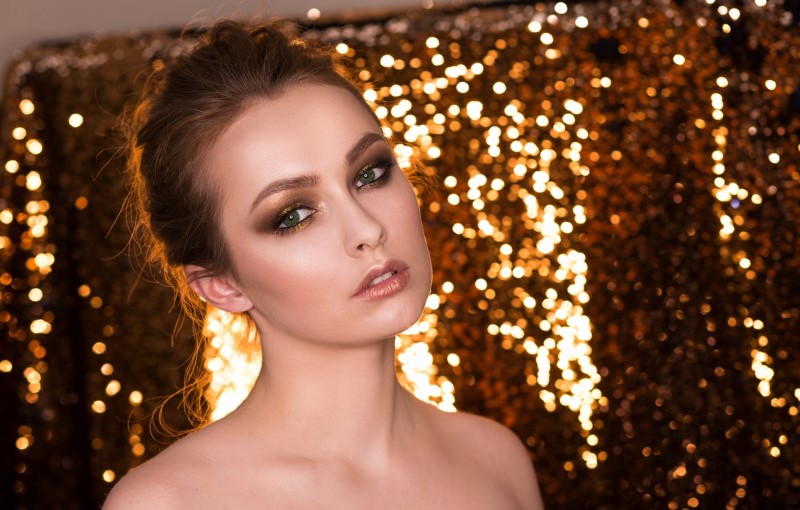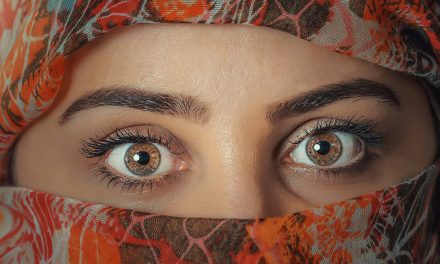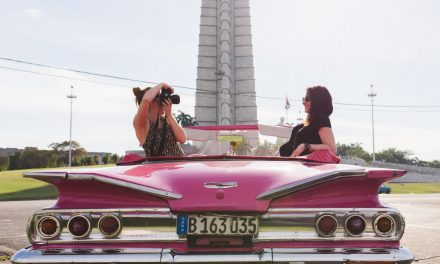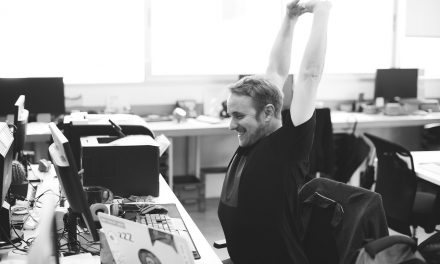Shooting a portrait on location means you work with what you have. But when you’re in the studio, you actually have the chance to control the space. What kind of backdrops can you use? What’s on the market right now, and what tends to work best? We’re going to break down the options you could go for, so you can make an informed decision about what you need in your studio kit.
Plain Walls
The simplest backdrop, and the easiest to supply, is the plain and simple walls of the studio. Most studio spaces are painted white – not just because it looks clean and makes a great backdrop, but because it also reflects light back into the space. This means most studios will offer the opportunity to use a plain white background simply by clearing a space near the wall.
Walls with a little texture may be a little trickier. If you can see brickwork or patterns on the wall, be aware that this is likely to be visible in your portrait as well. However, if you’re bothered by it, it will likely be very easy to Photoshop the walls back to smooth given the brightness levels.
This is the easiest and most basic backdrop option, so you may feel that you need to go further to be more creative and professional. On the other hand, it does give a strong effect – almost a background of “nothing”, a blank space to work with.
Paper Sheets
Another option to go for is paper backdrop rolls. These come in the form of a long tube, which you can hoist on a pole between two stands in order to form the backdrop. When you’re ready to use it, you pull the bottom of the paper roll out until it touches the floor, then a little further to create room for your subjects to stand entirely on the paper. Leave a small curve where the paper meets the floor to create a seamless effect, and tape the edges of the paper down – this prevents movement and also removes a trip hazard.
Paper backdrop rolls come in various sizes and many different colours, so it’s easy to find something that fits for you. Once the paper is torn or dirtied, you can simply rip or cut off the bottom part and then roll more paper out for the next shoot. This also makes it easy to change your backdrop relatively quickly, as you simply switch out the rolls.
Paper can provide the appearance of a seamless background, and is often used for full-length fashion shots and portraits. You can add some character with coloured or even patterned paper. There are a lot of possibilities. However, some photographers feel that rolls look too fake – or are too much of a cliché for studio use.
Fabric Sheets
How about putting up some curtains? Literally any large piece of fabric can be used as a backdrop if you can clip it to a pole or stick it to a wall – bedsheets, tablecloths, or even just bolts of fabric bought for the purpose. Sheets can create more interest in the background because they have folds and shadows, and can create a softer look. When straightened out and ironed, they can give a similar look to paper sheets.
Using draped fabric does have connotations when it comes to portraits. Actors would often have their portraits taken in a studio with draped sheets in early Hollywood days, and it was a strong trend during the days of black and white film. When colour film came into use, the fabric became less popular, because it needed to be either plain white or plain black to reproduce the same qualities it had displayed before.
Fabric can be very useful, although it does collect wrinkles easily – not perfect if you’re looking to use it as a smooth backdrop.
Wooden Boards
Wooden backdrops have seen something of a resurgence in recent years, thanks to the popularity of the idea of making it yourself. All you need is a large wooden board, or several boards that you can hammer together, and then some paint or wallpaper to stick over the top. The board needs to be very large to cover the whole backdrop, which means it is difficult to store and move. It also meets the floor at a right angle, which will provide a line in full-body shots you may not wish to have.
Still, wooden boards can bring a lot of character to a photoshoot. They can easily be personalised: you could create your own personal backdrops that no one else has, such as painted scenes for seasonal photoshoots. Having a unique backdrop will certainly set you apart. Of course, you can also take the easy route and buy one that has been pre-made for you.
Vinyl Backdrops
Vinyl is another material which has seen more popularity of late. It can perform the same kind of job as a paper backdrop, but is much more versatile: it’s harder to rip and easier to clean, and can be printed with any manner of scenes. You could have a realistic-looking brick wall, or a sunny beach, or anything at all that you wanted.
Vinyl does crease, however, so be careful of how you store it – folding it up will leave lines that you have to work to get out. It’s also important to remember that using a printed backdrop again and again will leave your portraits feeling samey to your customers. On the other hand, one really stunning vinyl print could win you plenty of customers who all want that same look for their portrait session.
There are a lot of options available for backdrops – and this list does not even include all the creative ways you could customise them or create extra elements. There is no right or wrong answer, as they all have their pros and cons. It’s up to the individual photographer to decide what works best for them.





